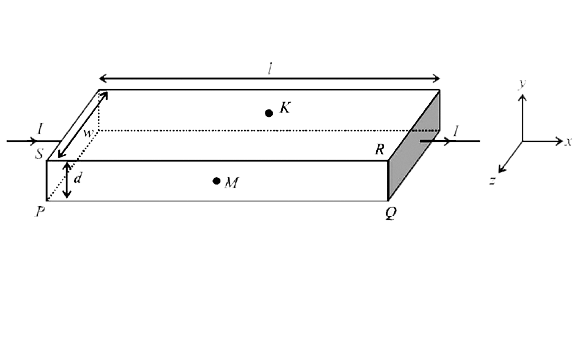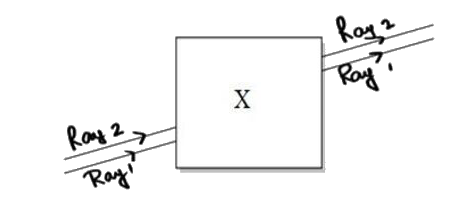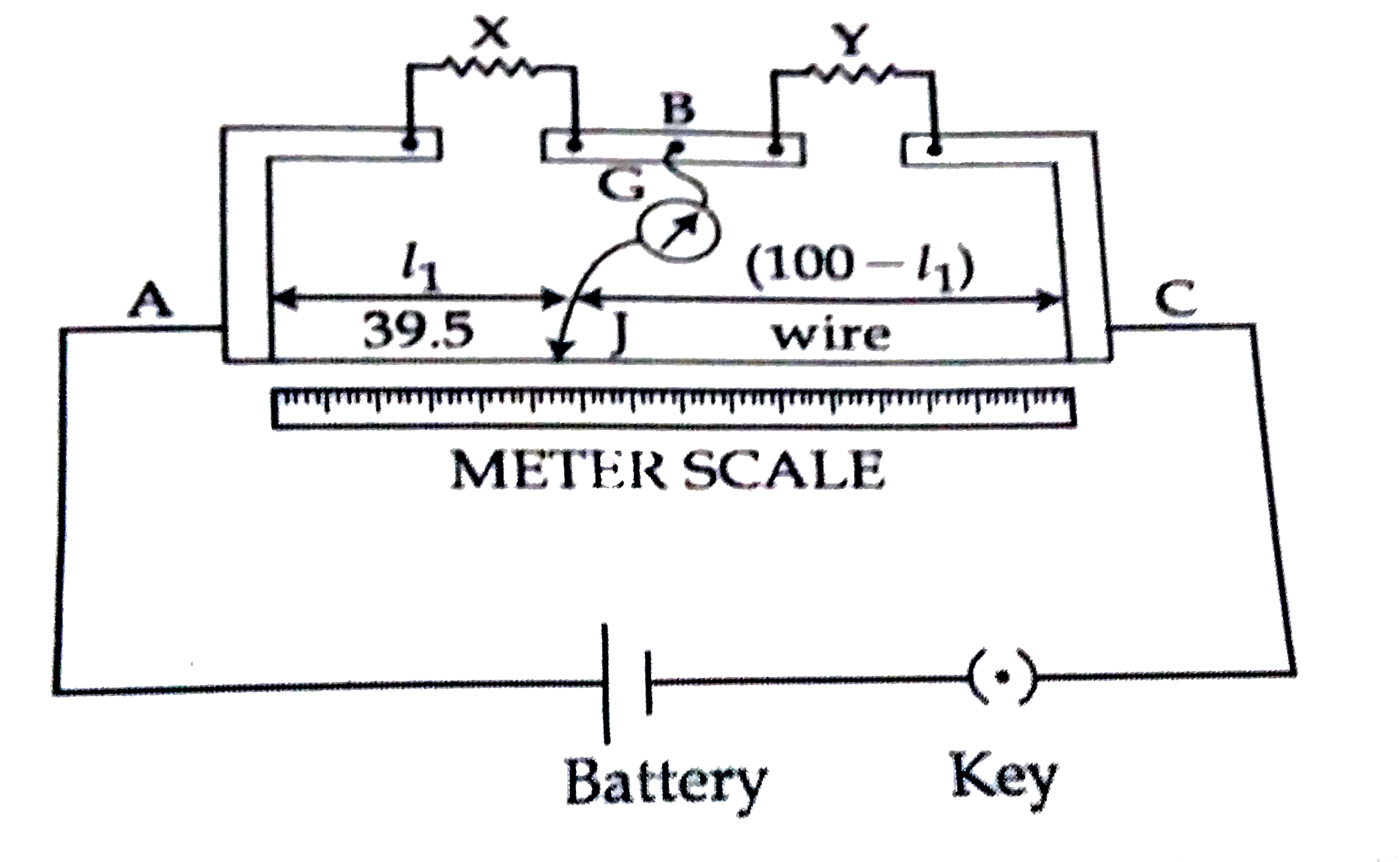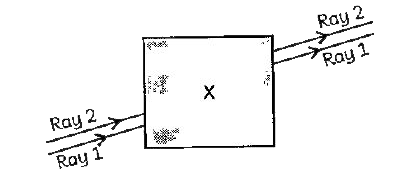Namita pumped air into two identical balloons, X and Y and balanced them on a meter stick as shown in the diagram
1. She then pricked the balloon X with a needle.
Diagram 2 shows the observation made by her after pricking the balloon 'X'. Why did the meter stick tilt towards the balloon Y? What does the given experiment demonstrate?

When the balloon .X. is pricked with a needle, air comes out of it. Meter stick tilts towards the balloon .Y. because it still contains air in it and is heavier than balloon .X. which does not contain air. The experiment demonstrates that air occupies space and has weight.
Topper's Solved these Questions
- BOOK - MTG IIT JEE FOUNDATIONCHAPTER - AIR AROUND US EXERCISE - NCERT SECTION9videos
AIR AROUND US
- BOOK - MTG IIT JEE FOUNDATIONCHAPTER - AIR AROUND US EXERCISE - EXERCISE (MCQs) LEVEL-130videos
AIR AROUND US
- BOOK - MTG IIT JEE FOUNDATIONCHAPTER - AIR AROUND US EXERCISE - OLYMPIAD/HOTS CORNER10videos
AIR AROUND US
- BOOK - MTG IIT JEE FOUNDATIONCHAPTER - BODY MOVEMENTSEXERCISE - OLYMPIAD/HOTS CORNER10videos
BODY MOVEMENTS
Similar Questions
In a thin rectangular metallic strip a constant current I flows along the positive x−direction , as shown in the figure. The length , width and thickness of the strip are l,wandd, respectively.
A uniform magnetic field →B is applied on the strip along the positive y−direction . Due to this, the charge carriers experience a net deflection along the z−direction . This results in accumulation of charge carriers on the surface PQRS ansd apperance of equal and opposite charges on the face opposite to PQRS. A potential difference along the z−direction is thus developed. Charge accumulation contiues untill the magnetic force is balanced by the electric force. The current is assumed to be uniformly distributed on the cross- section of the strip and carried by electrons.
Consider two different metallic strips (1and2) of the same material . Their lengths are the same,widths are w1andw2 and thickness are d1andd2 respectively. Two points KandM are symmetrically located on the opposite faces parallel to the x−y plane ( see figure) . V1andV2 are the potential differences between KandM in strips 1and2, respectively . Then, for a given current I flowing through them in a given magnetic field strength B, the correct statement(s) is (are)
 View Solution
View SolutionIn a thin rectangular metallic strip a constant current I flows along the positive x−direction , as shown in the figure. The length , width and thickness of the strip are l,wandd, respectively.
A uniform magnetic field →B is applied on the strip along the positive y−direction . Due to this, the charge carriers experience a net deflection along the z−direction . This results in accumulation of charge carriers on the surface PQRS ansd apperance of equal and opposite charges on the face opposite to PQRS. A potential difference along the z−direction is thus developed. Charge accumulation contiues untill the magnetic force is balanced by the electric force. The current is assumed to be uniformly distributed on the cross- section of the strip and carried by electrons.
Consider two different metallic strips (1and2) of the same material . Their lengths are the same,widths are w1andw2 and thickness are d1andd2 respectively. Two points KandM are symmetrically located on the opposite faces parallel to the x−y plane ( see figure) . V1andV2 are the potential differences between KandM in strips 1and2, respectively . Then, for a given current I flowing through them in a given magnetic field strength B, the correct statement(s) is (are)
 View Solution
View Solution
Knowledge Check
- Question 1 - Select One
A neutral particle is initally at rest in a uniform magnetic field B as shown in the diagram. The particle then spontaneously decays into two fragments, one with a positive charge +q and mass 3m and the other with negative charge −q and mass m. Neglecting the interaction between the two charged particles and assuming that the speeds are much less than speed of light, determine the time (in μs) after the decay at which the two fragments first meet. (use the following data q=1μCB=2πμT,m=10−15kg). Both the charges have initial velocity in x−y plane.
 A250B500C600D750
A250B500C600D750 - Question 2 - Select One
Meena is performing an experiment with two substances, X and Y. When she puts a few granules of X in Y, she decides to collect Z- the gas produced, into a balloon. When she leaves the balloon, it floats in the air. Which of the following can be the substances X, Y and Z?
AX: Tin, Y: Hydrochloric Acid, Z: HydrogenBX: Mercury, Y: Nitric Acid, Z: Nitric OxideCX: Copper, Y: Sulphuric Acid, Z: HydrogenDX: Potassium Permanganate, Y: Hydrogen Peroxide, Z: Hydrogen - Question 3 - Select One
In a thin rectangular metallic strip a constant current I flows along the positive x−direction,asshown∈thefigure.The≤n>h,whandthick≠ssofthestriparel, w and d,respectively.<br>Auniformmag≠ticfieldvec(B)isappliedonthestripalongthepositivey- direction.Due→this,thechar≥carriersexperiencea≠tdef≤ctionalongthez- direction.Thisrest–s∈auμlationofchar≥carriersonthesurfacePQRSansdapperanceofequalandoppositechar≥sonthefaceopposite→PQRS.Apotentiald⇔erencealongthez-directionisthusdeveloped.Char≥auμlationcontiuesuntillthemag≠ticforceisbalancedbythee≤ctricforce.Thecurrentisas∑ed→beuniformlydistributedonthecross−sectionofthestripandcarriedbye≤ctrons.<br>Consrtwod⇔erentmηllicstrips(1 and 2)ofthesamematerial.Their≤n>hsarethesame,whsarew_(1) and w_(2)andthick≠ssared_(1) and d_(2)respectively.Twop∮sK and Maresymmetricallylocatedontheoppositefacesparal≤l→the x-ypla≠(seefigure).V_(1) and V_(2)arethepotentiald⇔erencesbetweenK and M∈strips 1 and 2,respectively.Then,foragivencurrentIflow∈gthroughthem∈agivenmag≠ticfieldstren>hB, the correct statement(s) is (are)
 AIf w1=w2andd1=2d2,thenV2=2V1BIf w1=w2andd1=2d2,thenV2=V1CIf w1=2w2andd1=d2,thenV2=2V1DIf w1=2w2andd1=2d2,thenV2=V1
AIf w1=w2andd1=2d2,thenV2=2V1BIf w1=w2andd1=2d2,thenV2=V1CIf w1=2w2andd1=d2,thenV2=2V1DIf w1=2w2andd1=2d2,thenV2=V1
Each of the questions below consists of a question and two statements numbered I and II given below it. You have to decide whether the data provided in the statements are sufficient to answer the question. Read both the statements and give answer
1) if the data in statement I alone are sufficient to answer the question while the data in statement II alone are not sufficient to answer the question.
2) if the data in statement II alone are sufficient to answer the question while the data in statement I alone are not sufficient to answer the question.
3) if the data either in statement I alone or in statement II alone are sufficient to answer the question,
4) if the data even in both statements I and II together are not sufficient to answer the question.
5) if the data in both statements I and II together are necessary to answer the question.
How long does it take to reach city Y’ from city X?
I. Sangita was scheduled to leave the city 'X' at 17.15hrs but got late by 45 minutes and reached city 'Y’ at 06,15 hrs the next day.
II.H. Sangita reached the bus-stand of city 'X' at 14.25 hrs and got the bus after waiting for 35 minutes. She reached, city at 3.15 hrs the next day.View SolutionNoor, a young student, was trying to demonstrate some properties of light in her Science project work. She kept ‘X’ inside the box (as shown in the figure) and with the help of a laser pointer made light rays pass through the holes on one side of the box. She had a small butter-paper screen to see the spots of light being cast as they emerged.

Her friend noted the following observations from this demonstration:
i. Glass is optically rarer than air.
ii. Air and glass allow light to pass through them with the same velocity.
iii. Air is optically rarer than glass.
iv. Speed of light through a denser medium is faster than that of a rarer medium.
v. The ratio: sin of angle of incidence in the first medium to the ratio of sin of angle of refraction in the second medium, gives the refractive index of the second material with respect to the first one.
Which one of the combination of the above statements given below is correct.View Solution(i) Two sinusoidal wave are given as y1=a1sin(ωt+kx+δ) and y2=a2sin(ωt−kx). They superimpose.
(a) Calculate the resultant amplitude of oscillation at a position x. Is amplitude time dependent?
(b) Calculate the ratio of maximum and minimum amplitudes observed.
(ii) A speaker (producing a sound of a single wavelength l) and a microphone are placed as shown in the figure. The microphone detects the sound and converts it into electrical signal. This way we can obtain the waveform of the sound. Assume that there is no attenuation of the sound. The waveform detected by the microphone is sinusoidal with amplitude a. In one experiment 6 microphones are placed in front of the speaker with distance between two neighbouring microphones being d=5λ6
(a) he output from all the 6 microphones is superimposed. What is amplitude of the resultant?
(b) If large number of microphone are kept with separation L between two consecutive ones, how will the combined output change with L? Given that L≠nλ(n=1,2,3...........)
 View Solution
View Solution
In a meter bridge, as shown in the figure, it is given that resistance Y=12.5Ω and that the balance is obtained at a distance 39.5cm from end A (by jockey J). After interchanging the resistance X and Y, a new balance point is found at a distance l2 from end A. What are the values of X and l2 ?View SolutionCase : Noor, a young student, was trying to demonstrate some properties of light in her Science project work. She kept 'X' inside the box (as shown in the figure) and with the help of a laser pointer made light rays pass through the holes on one side of the box. She had a small butter-paper screen to see the spots of light being cast as they emerged.

Her friend noted the following observations from this demonstration:
(I) Glass is optically rarer than air.
(II) Air and glass allow light to pass through them with the same velocity.
(III) Air is optically rarer than glass.
(IV) Speed of light through a denser medium is faster than that of a rarer medium.
(V) The ratio: sin of angle of incidence in the first medium to the ratio of sin of angle of refraction in the second medium, gives the refractive index of the second material with respect to the first one.
Which one of the combination of the above statements given below is correct.View Solution
